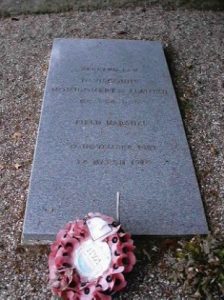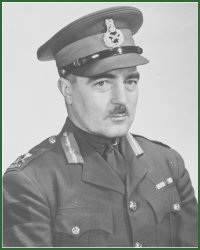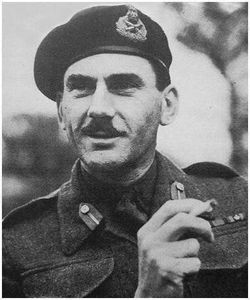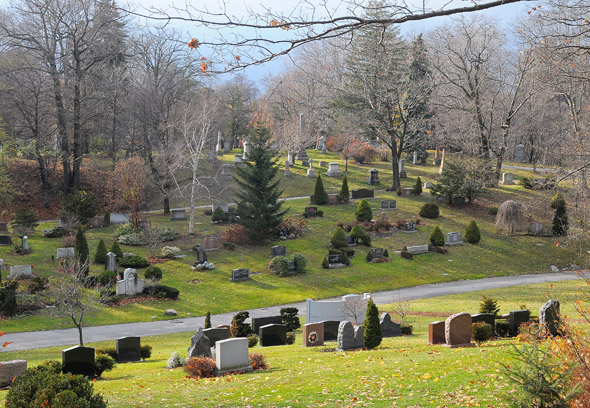Simonds, Guy Granville, born 23-04-1903 in Bury St Edmunds, England,  the son of the British officer Cecil Barrows Simonds, who brought his family to Canada, and his wife Eleanor Marion , born Stuart “Nellie” Easton Simonds (1870–1959). Guy came from a military family: his great-grandfather had been in the army of the Honourable East India Company,
the son of the British officer Cecil Barrows Simonds, who brought his family to Canada, and his wife Eleanor Marion , born Stuart “Nellie” Easton Simonds (1870–1959). Guy came from a military family: his great-grandfather had been in the army of the Honourable East India Company,  his grandfather had been a Major-General in the British Indian Army and his father an officer in the British Army’s Royal Regiment of Artillery. The Simonds family was related to General Sir Frederick Ivor Maxse
his grandfather had been a Major-General in the British Indian Army and his father an officer in the British Army’s Royal Regiment of Artillery. The Simonds family was related to General Sir Frederick Ivor Maxse  and Lord Alfred Milner.
and Lord Alfred Milner.  On his maternal side, his grandfather William Easton was a wealthy Virginian horse breeder, who had moved to England, renting Ixworth Abbey. Eleanor “Nellie” Easton, his mother, was one of five daughters, four of whom married army officers.His father Cecil, a Major, resigned from the British Army in fall 1911 (when Guy was 8) and moved his family to British Columbia, working as a surveyor for a railway. Cecil’s expectations of having his own survey company were frustrated by the requirement to pass local professional examinations. Re-joining the army at the start of World War I, Cecil was wounded in 1918, and demobilized in 1919 with the rank of Colonel. The family spent the war in a rented house in Victoria. Guy’s mother sold family possessions to make ends meet. Guy had to quit school for two years at age fourteen to help support the family. Graham speculates that the period of fatherlessness made him a “loner” and self-reliant. Simonds had three siblings, Cicely, Peter and Eric. Eric (anecdotally an excellent rifle shot, having won prizes at Bisley) became a test pilot, but died in an air accident off Felixstowe in July 1937 in a Miles Magister while serving with the A&AEE in England. Cicely worked as a secretary in the Admiralty during the war. She and her daughter were killed by a V-1 (flying bomb)
On his maternal side, his grandfather William Easton was a wealthy Virginian horse breeder, who had moved to England, renting Ixworth Abbey. Eleanor “Nellie” Easton, his mother, was one of five daughters, four of whom married army officers.His father Cecil, a Major, resigned from the British Army in fall 1911 (when Guy was 8) and moved his family to British Columbia, working as a surveyor for a railway. Cecil’s expectations of having his own survey company were frustrated by the requirement to pass local professional examinations. Re-joining the army at the start of World War I, Cecil was wounded in 1918, and demobilized in 1919 with the rank of Colonel. The family spent the war in a rented house in Victoria. Guy’s mother sold family possessions to make ends meet. Guy had to quit school for two years at age fourteen to help support the family. Graham speculates that the period of fatherlessness made him a “loner” and self-reliant. Simonds had three siblings, Cicely, Peter and Eric. Eric (anecdotally an excellent rifle shot, having won prizes at Bisley) became a test pilot, but died in an air accident off Felixstowe in July 1937 in a Miles Magister while serving with the A&AEE in England. Cicely worked as a secretary in the Admiralty during the war. She and her daughter were killed by a V-1 (flying bomb)  attack in June 1944, during World War II.
attack in June 1944, during World War II.
 the son of the British officer Cecil Barrows Simonds, who brought his family to Canada, and his wife Eleanor Marion , born Stuart “Nellie” Easton Simonds (1870–1959). Guy came from a military family: his great-grandfather had been in the army of the Honourable East India Company,
the son of the British officer Cecil Barrows Simonds, who brought his family to Canada, and his wife Eleanor Marion , born Stuart “Nellie” Easton Simonds (1870–1959). Guy came from a military family: his great-grandfather had been in the army of the Honourable East India Company,  his grandfather had been a Major-General in the British Indian Army and his father an officer in the British Army’s Royal Regiment of Artillery. The Simonds family was related to General Sir Frederick Ivor Maxse
his grandfather had been a Major-General in the British Indian Army and his father an officer in the British Army’s Royal Regiment of Artillery. The Simonds family was related to General Sir Frederick Ivor Maxse  and Lord Alfred Milner.
and Lord Alfred Milner.  On his maternal side, his grandfather William Easton was a wealthy Virginian horse breeder, who had moved to England, renting Ixworth Abbey. Eleanor “Nellie” Easton, his mother, was one of five daughters, four of whom married army officers.His father Cecil, a Major, resigned from the British Army in fall 1911 (when Guy was 8) and moved his family to British Columbia, working as a surveyor for a railway. Cecil’s expectations of having his own survey company were frustrated by the requirement to pass local professional examinations. Re-joining the army at the start of World War I, Cecil was wounded in 1918, and demobilized in 1919 with the rank of Colonel. The family spent the war in a rented house in Victoria. Guy’s mother sold family possessions to make ends meet. Guy had to quit school for two years at age fourteen to help support the family. Graham speculates that the period of fatherlessness made him a “loner” and self-reliant. Simonds had three siblings, Cicely, Peter and Eric. Eric (anecdotally an excellent rifle shot, having won prizes at Bisley) became a test pilot, but died in an air accident off Felixstowe in July 1937 in a Miles Magister while serving with the A&AEE in England. Cicely worked as a secretary in the Admiralty during the war. She and her daughter were killed by a V-1 (flying bomb)
On his maternal side, his grandfather William Easton was a wealthy Virginian horse breeder, who had moved to England, renting Ixworth Abbey. Eleanor “Nellie” Easton, his mother, was one of five daughters, four of whom married army officers.His father Cecil, a Major, resigned from the British Army in fall 1911 (when Guy was 8) and moved his family to British Columbia, working as a surveyor for a railway. Cecil’s expectations of having his own survey company were frustrated by the requirement to pass local professional examinations. Re-joining the army at the start of World War I, Cecil was wounded in 1918, and demobilized in 1919 with the rank of Colonel. The family spent the war in a rented house in Victoria. Guy’s mother sold family possessions to make ends meet. Guy had to quit school for two years at age fourteen to help support the family. Graham speculates that the period of fatherlessness made him a “loner” and self-reliant. Simonds had three siblings, Cicely, Peter and Eric. Eric (anecdotally an excellent rifle shot, having won prizes at Bisley) became a test pilot, but died in an air accident off Felixstowe in July 1937 in a Miles Magister while serving with the A&AEE in England. Cicely worked as a secretary in the Admiralty during the war. She and her daughter were killed by a V-1 (flying bomb)  attack in June 1944, during World War II.
attack in June 1944, during World War II.Guy attended Royal Military College in Kingston  , Ontario between 1921 and 1925, and joined the Canadian Permanent Force in 1926 as an artillery specialist. After some time studying in Britain, his understanding in modern mobile warfare brought him to join the staff of his Alma mater Royal Military College, and published in the Canadian Defence Quarterly. As Britain became involved in World War II, he was transferred to Britain with the Canadian 1st Infantry Division
, Ontario between 1921 and 1925, and joined the Canadian Permanent Force in 1926 as an artillery specialist. After some time studying in Britain, his understanding in modern mobile warfare brought him to join the staff of his Alma mater Royal Military College, and published in the Canadian Defence Quarterly. As Britain became involved in World War II, he was transferred to Britain with the Canadian 1st Infantry Division  in December 1939.
in December 1939.  Guy spent some time training officers at the Canadian Junior War Staff Course. Simonds’ first combat commission was during the Allied operations at Sicily commanding the American 1st Infantry Division `The Big Red One`
Guy spent some time training officers at the Canadian Junior War Staff Course. Simonds’ first combat commission was during the Allied operations at Sicily commanding the American 1st Infantry Division `The Big Red One`  under command of Major General Walter Campbell Short
under command of Major General Walter Campbell Short 
 participating in battles at Nissoria, Agira and Regalbuto.
participating in battles at Nissoria, Agira and Regalbuto. 

 Major-General Guy Simonds, GOC of the 1st Canadian Infantry Division, coming ashore on Sicily, July 1943.
Major-General Guy Simonds, GOC of the 1st Canadian Infantry Division, coming ashore on Sicily, July 1943.
 , Ontario between 1921 and 1925, and joined the Canadian Permanent Force in 1926 as an artillery specialist. After some time studying in Britain, his understanding in modern mobile warfare brought him to join the staff of his Alma mater Royal Military College, and published in the Canadian Defence Quarterly. As Britain became involved in World War II, he was transferred to Britain with the Canadian 1st Infantry Division
, Ontario between 1921 and 1925, and joined the Canadian Permanent Force in 1926 as an artillery specialist. After some time studying in Britain, his understanding in modern mobile warfare brought him to join the staff of his Alma mater Royal Military College, and published in the Canadian Defence Quarterly. As Britain became involved in World War II, he was transferred to Britain with the Canadian 1st Infantry Division  in December 1939.
in December 1939.  Guy spent some time training officers at the Canadian Junior War Staff Course. Simonds’ first combat commission was during the Allied operations at Sicily commanding the American 1st Infantry Division `The Big Red One`
Guy spent some time training officers at the Canadian Junior War Staff Course. Simonds’ first combat commission was during the Allied operations at Sicily commanding the American 1st Infantry Division `The Big Red One` 
 participating in battles at Nissoria, Agira and Regalbuto.
participating in battles at Nissoria, Agira and Regalbuto. 

 Major-General Guy Simonds, GOC of the 1st Canadian Infantry Division, coming ashore on Sicily, July 1943.
Major-General Guy Simonds, GOC of the 1st Canadian Infantry Division, coming ashore on Sicily, July 1943.The casualties of the 1st Division during their European campaign: Total battle casualties: 20.659, killed in action: 3.616, wounded in action: 15.208, missing in action: 499, and prisoner of war: 1.336
Guy, here with Montgomery
 was then appointed as the commander of the 5th Canadian Armoured Division, nickname “Mighty Maroon Machine”
was then appointed as the commander of the 5th Canadian Armoured Division, nickname “Mighty Maroon Machine”  for his brilliance commanding both infantry and tanks at Sicily. He succeeded Major General Charles Ramsay Stirling Stein.
for his brilliance commanding both infantry and tanks at Sicily. He succeeded Major General Charles Ramsay Stirling Stein.  Simonds give his command from 01-11-1943 to General-Major Christopher Robin Vokes
Simonds give his command from 01-11-1943 to General-Major Christopher Robin Vokes
Guy, here with Montgomery

 was then appointed as the commander of the 5th Canadian Armoured Division, nickname “Mighty Maroon Machine”
was then appointed as the commander of the 5th Canadian Armoured Division, nickname “Mighty Maroon Machine”  for his brilliance commanding both infantry and tanks at Sicily. He succeeded Major General Charles Ramsay Stirling Stein.
for his brilliance commanding both infantry and tanks at Sicily. He succeeded Major General Charles Ramsay Stirling Stein.  Simonds give his command from 01-11-1943 to General-Major Christopher Robin Vokes
Simonds give his command from 01-11-1943 to General-Major Christopher Robin Vokes


In January 1944, Simonds was promoted to the rank of Lieutenant General and was placed in charge of Canadian troops of the II Canadian Corps
 for the campaign in Normandy. The Ist Canadian Corps reached Normandy in July 1944, participating in various actions in the Normandy region. Infantry battalions of the 1st Canadian Division suffered 52.559 casualties during its years in the field, some 15.055 of them fatal—statistically, representing almost the original strength of the entire division. Twenty-four soldiers of the division were awarded the Victoria Cross
for the campaign in Normandy. The Ist Canadian Corps reached Normandy in July 1944, participating in various actions in the Normandy region. Infantry battalions of the 1st Canadian Division suffered 52.559 casualties during its years in the field, some 15.055 of them fatal—statistically, representing almost the original strength of the entire division. Twenty-four soldiers of the division were awarded the Victoria Cross  made from carrier made for self-propelled guns.
made from carrier made for self-propelled guns.  General Sir Bernard Montgomery shows Prime Minister Winston Churchill
General Sir Bernard Montgomery shows Prime Minister Winston Churchill  the battle situation on a map held by the commander of II Canadian Corps, Lieutenant-General Guy Simonds, during Churchill’s visit to Normandy, 22-07-1944. Lieutenant-General Miles “Lucky” Dempsey,
the battle situation on a map held by the commander of II Canadian Corps, Lieutenant-General Guy Simonds, during Churchill’s visit to Normandy, 22-07-1944. Lieutenant-General Miles “Lucky” Dempsey,
 the commander of the British Second Army, looks on.
the commander of the British Second Army, looks on.In September 1944, Simonds took over the 1st Canadian Army due to General Henry D.G. Crerar

 illness. In this role, his Canadian soldiers bravely fought a bitter campaign to clear stubborn German defences at the Scheldt Estuary. With the mouth of the Scheldt cleared, Antwerp became a usable port capable of bringing large amounts of supplies for the Allied war effort. Montgomery called Simonds “only General fit to hold high command in war”. After WWII, Simonds joined the Staff of the Imperial Defence College at Britain, then returned to the Royal Military College of Ontario in 1949 as its commander. Between 1951 and 1955, Simondshe here with our Prince Bernhard von Lippe Biesterfeld before his departure from Europe,
illness. In this role, his Canadian soldiers bravely fought a bitter campaign to clear stubborn German defences at the Scheldt Estuary. With the mouth of the Scheldt cleared, Antwerp became a usable port capable of bringing large amounts of supplies for the Allied war effort. Montgomery called Simonds “only General fit to hold high command in war”. After WWII, Simonds joined the Staff of the Imperial Defence College at Britain, then returned to the Royal Military College of Ontario in 1949 as its commander. Between 1951 and 1955, Simondshe here with our Prince Bernhard von Lippe Biesterfeld before his departure from Europe,
 served as the Chief of the General Staff of the Canadian Army.
served as the Chief of the General Staff of the Canadian Army.Death and burial ground of Simonds, Guy Granville.


 Guy Simonds passed away in Toronto on 15-05-1974, age 71
Guy Simonds passed away in Toronto on 15-05-1974, age 71  and is buried with his wife Dorothy, born Sinclair, on the cemetery Mount Pleasant in Toronto, Canada.
and is buried with his wife Dorothy, born Sinclair, on the cemetery Mount Pleasant in Toronto, Canada.

Message(s), tips or interesting graves for the webmaster: robhopmans@outlook.com























Leave a Reply